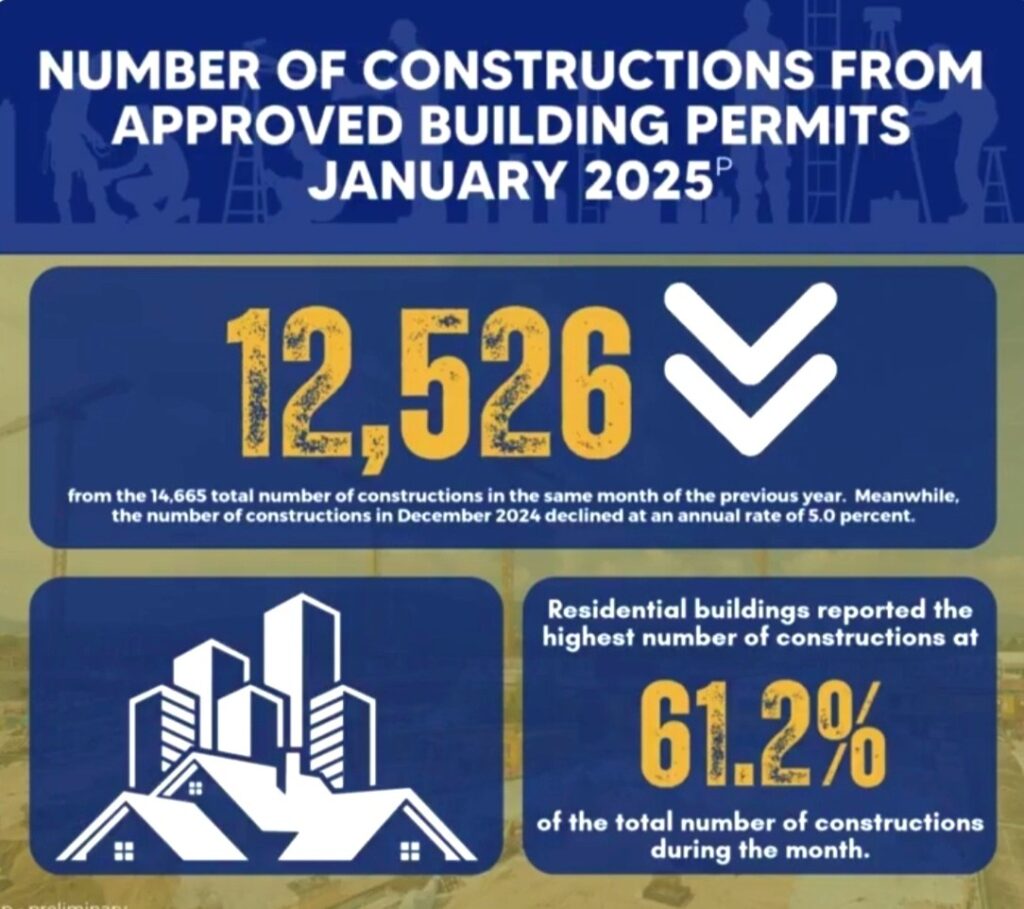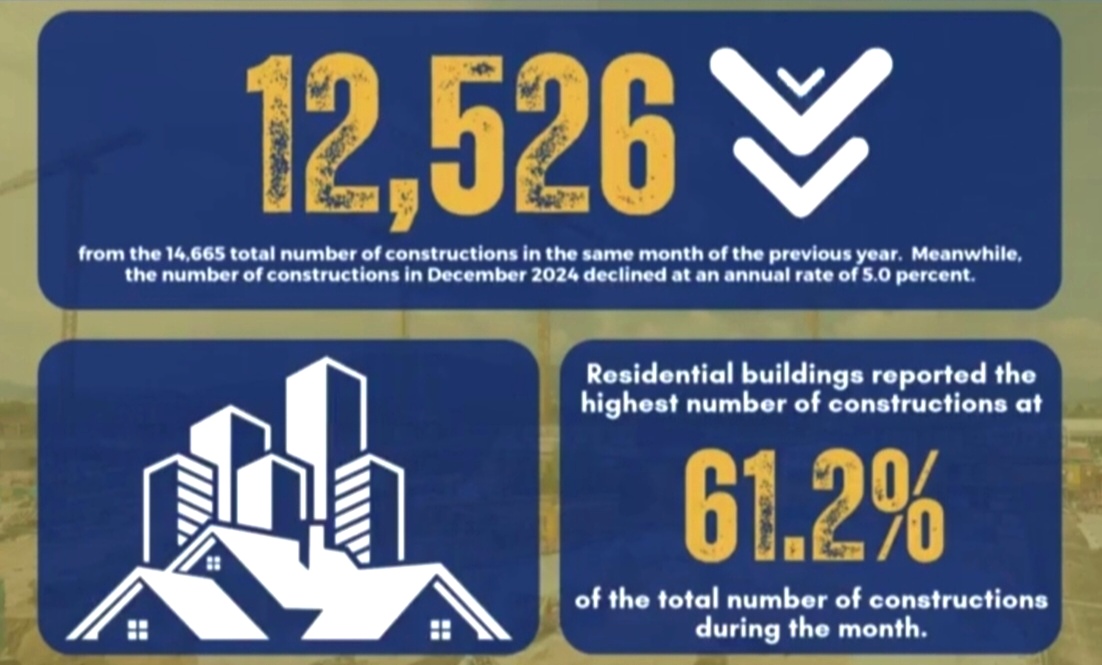Phl construction permits drop 14.6%, values jump 26%

The Philippine construction industry presented contrasting trends at the start of the year, with a significant drop in building permits but strong growth in construction value and floor area, according to preliminary data released by the Philippine Statistics Authority (PSA).
Approved building permits fell sharply by 14.6% year-on-year to just 12,526 in January 2025, continuing a downward trend from December 2024’s 5% decline. However, the total value of construction projects surged by 26.1% to P48.58 billion, while floor area expanded by 29.5% to 3.72 million square meters.
The residential sector, which typically dominates construction activity, showed particular weakness. Residential permits accounted for 61.2% of total approvals but declined 14.1% to 7,671 projects. Single-type houses made up the vast majority (89.5%) of these residential permits.
In contrast, non-residential construction demonstrated remarkable strength despite a 4.3% dip in permit numbers. The sector’s value skyrocketed 40.4% to P24.16 billion, representing nearly half of all construction spending. Commercial buildings led this segment, comprising 72.9% of non-residential permits.
Other construction categories showed mixed performance. Additions to existing structures increased 24.8% in number but saw their value plummet 36.8%. Alteration and repair projects declined across all metrics, while other construction types experienced a dramatic 69.5% drop in permits.
The average construction cost rose 4.5% to P12,208 per square meter, with residential condominiums commanding the highest prices at P23,655 per square meter. Commercial buildings averaged P12,059 per square meter, while agricultural structures were the most affordable at P4,336 per square meter.
Industry analysts suggest these trends reflect shifting priorities in the construction sector, with developers focusing on larger, higher-value projects despite economic uncertainties. The strong performance in commercial construction indicates continued business confidence, while the residential slowdown may signal challenges in the housing market.
The PSA emphasized that these figures are preliminary and subject to revision. The full report includes detailed breakdowns by construction type and region.



0 Comment